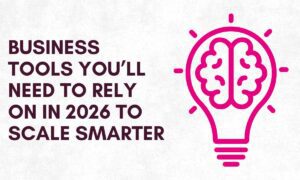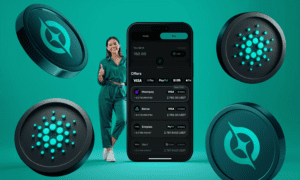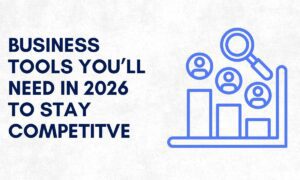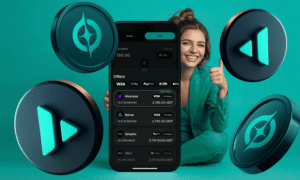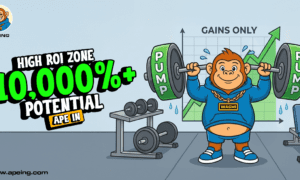If you’re tired of shouting into the void with emails that go unopened, it’s time to try a more direct approach. Text messages get seen—and fast. That’s why every brand needs a clear SMS marketing guide to create a smart funnel that works. Check out this website if you’re ready to take action and build your own system from scratch. In this guide, we’ll show you step-by-step how to move people from a simple opt-in all the way to final conversion using nothing more than simple, well-timed texts.
What Is an SMS Marketing Funnel?
Think of a funnel as a path your customers follow—from discovering your brand to making a purchase. Now imagine doing it all through simple, well-timed texts. That’s what an SMS marketing funnel is. You’ll find tips like this in any solid SMS marketing guide worth following. The idea is to guide people step-by-step using short, targeted messages that inform, build trust, and prompt action. It’s faster, more personal, and often more effective than email alone.
Step 1: Identify Your Funnel Goal
Before you send anything, ask yourself: what’s the outcome? More bookings? Product sales? Signups? Get specific. You don’t need to guess—an SMS marketing guide gives you a step-by-step path to follow. For example, a skincare brand might aim to get 500 people to claim a new customer discount. Once you define that goal, every message you send should point in that direction. It keeps your funnel clean, focused, and results-driven.
Step 2: Build Your Subscriber List
You need permission before you start texting. That’s not just about compliance—it’s about respect. Offer something worthwhile for signing up: a discount, early access, or a freebie. As outlined in most SMS marketing guide resources, the easier you make it to opt in, the faster your list grows. Use website pop-ups, in-store signs, social media promos, or checkout forms. Keep it clear and make sure subscribers know what they’re signing up for.
Step 3: Segment Your Audience
Sending one message to everyone doesn’t cut it anymore. Segmentation lets you personalize messages based on user behavior, interests, or location. Just like a typical SMS marketing guide would recommend, grouping your contacts means better engagement and fewer unsubscribes. A coffee shop might segment between early-morning regulars and weekend brunch crowd. The more relevant the message, the more likely it drives action.
Step 4: Map the Funnel Stages
Your SMS funnel should mirror the customer journey:
- Awareness – Welcome and introduce your brand
- Interest – Share a popular product or offer
- Decision – Add urgency or testimonials
- Action – A final nudge with a strong CTA
This tactic checks all the boxes in a classic SMS marketing guide. Don’t overload the user—each message should do one job and make the next step easy. A drip-style sequence sent over a few days often works best.
Step 5: Write High-Converting Texts
Writing effective texts doesn’t require a copywriting degree. Just keep it real and to the point. Personalize when you can, and always include a clear CTA. If you’ve read an SMS marketing guide recently, you know personalization is key. Try: “Hey Sam, our 24-hour flash sale ends soon. Tap to save 20%: [link].” That’s short, helpful, and gives people a reason to act now.
Step 6: Automate and Schedule Messages
You don’t need to send each message manually. Automation lets you trigger texts based on behavior—like signing up, buying something, or abandoning a cart. It’s a strategy even the most advanced SMS marketing guide would approve of. Timing matters too. Most texts get the best results when sent mid-morning or early evening. Schedule, test, and refine as you go. Let the tech do the heavy lifting.
Track Performance and Tweak
Track open rates, clicks, conversions, and unsubscribes. These numbers tell you what’s working—and what’s not. Following an SMS marketing guide can help avoid common rookie mistakes here, like ignoring unsubscribe trends or failing to test different message types. Start simple: test one message against another. Over time, your data will show exactly how to sharpen your funnel:
- How many open the texts
- How many click the link
- How many actually buy
- How many unsubscribe
Small changes can make a big difference. Try testing two different messages, or changing the timing. Look at what works, and adjust. Funnels aren’t static—they grow with your business.
Pro Tips to Maximize Funnel Success
Here are some extra moves you’ll see in nearly every SMS marketing guide used by pros:
- Pair SMS with email and social for bigger impact
- Use real deadlines, not fake urgency
- Speak like a human, not a bot
- Always include an opt-out option
- Don’t spam—quality beats quantity every time
These tips help you build trust and keep subscribers engaged long-term.
How Long Till I See Good Results?
SMS funnels aren’t magic. But with the right approach, they work—fast. Brands that stick to a proven SMS marketing guide tend to see stronger results, better customer relationships, and fewer missed opportunities. From goal setting to automation, each step you’ve learned here leads to more focused, effective messaging. Keep testing. Keep listening. And most importantly, treat every text like it’s one-to-one. Because when it’s done right, SMS doesn’t just get seen—it builds loyalty that lasts.












